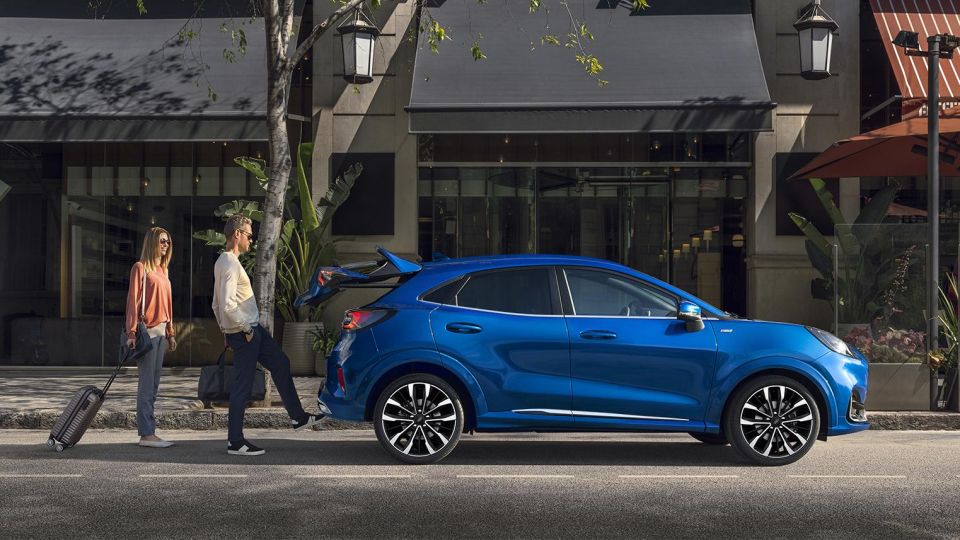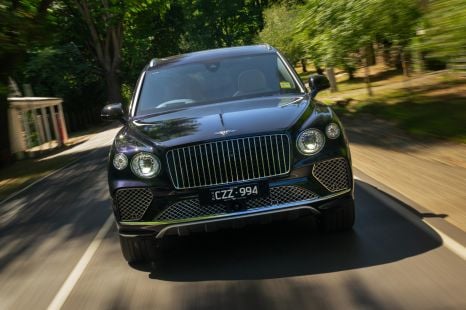

CarExpert.com.au
Model range deep-dive: Mahindra's SUV family
4 Days Ago

Marketplace Editor
The all-new Ford Puma is due to hit Australian showrooms during the third quarter of 2020, giving the Blue Oval a proper rival to the likes of the Hyundai Kona and Volkswagen T-Cross.
A three-tier line-up will form the local line-up at launch, with one engine/transmission option available.
Update, 11:25am 2/6: Ford Australia has confirmed details regarding the Puma’s AEB capabilities, fuel consumption and some other specifications. We’ve updated the article to reflect this, you can also read our first drive of the Ford Puma.
Like the Focus and Escape, the Puma will be sourced from Europe – though Australian-market Pumas will be assembled in Romania, while Focus hails from Germany and Escape from Spain.

All prices exclude on-road costs
UPDATE: Ford Australia has confirmed national drive-away pricing for the 2020 Puma line-up:
For drive-away prices on specific configurations, you can use the official Ford configurator.

All versions of the Puma in Australia will be powered by a 1.0-litre ‘EcoBoost’ turbocharged three-cylinder petrol engine, developing 92kW of power and 170Nm of torque.
Maximum power comes in at 6000rpm, while peak torque is on tap from 1500 to 4500rpm.
Drive is sent exclusively to the front wheels via a seven-speed dual-clutch automatic transmission as standard.
Unlike the European market, Australia misses out on the 48V mild-hybrid versions of the 1.0-litre EcoBoost motor, as well as the availability of a six-speed manual transmission.
You can view all the various engine specifications for each variant on the official brochure.

Ford claims the Puma range will consume 5.3L/100km on the combined cycle.
The Puma’s EcoBoost engine includes high-pressure direct fuel injection, twin-independent variable cam timing and fuel-saving cylinder deactivation – meaning it can shut off one cylinder under low engine load to save fuel.
All models also feature idle stop/start technology, and a 42L fuel tank.
The standard ‘Puma’ grade measures 4186mm long, 1805mm wide and 1550mm tall.
ST-Line and ST-Line V models are slightly longer at 4207mm thanks to the sportier body kit.
Ground clearance is 166mm for the base Puma, while ST-Line and ST-Line V models offer 164mm of clearance – the mid- and high-spec grades feature lowered sports suspension as standard.
Luggage capacity is rated at 410L for all models with the second row of seats in place, expanding to 1170L (too the roof) with the rear pews folded.
It’s worth noting the 80L ‘MegaBox’ available in European models won’t be available in Australia, with the local arm instead opting to include a space-saver spare wheel under the boot floor. There is still an underfloor storage system measuring 34L, contributing to the local model’s 410L capacity.

The Ford Puma is yet to receive a safety rating from local crash-testing firm, ANCAP, though it will likely score five-stars based on Euro NCAP tests.
ANCAP’s European sister firm awarded a five-star rating for the Puma in 2019, with category scores of 94 per cent for adult occupant protection, 84 per cent for child occupant protection, 77 per cent for vulnerable road users, and 74 per cent for safety assist.
In Australia, all Ford Puma models will come with a comprehensive suite of active safety and driver assistance technologies, including autonomous emergency braking with pedestrian and cyclist detection, lane departure warning with lane-keep assist, traffic sign recognition, driver impairment monitor, a reversing camera with rear parking sensors, tyre pressure monitoring, an emergency assistance function, as well as six airbags.
The standard AEB system is camera-based and operates at up to 130km/h for vehicles and 80km/h for pedestrians and cyclists.
An available Park Package for all models brings high-end assist features like adaptive cruise control with stop&go and lane centring, evasive steer assistance, Active Park Assist with front, side and rear parking sensors, along with blind-spot monitoring.
Opting for this package adds a radar sensor for the AEB system, retaining its 80km/h operating speed limit for vulnerable road users while working up to the vehicle’s top speed for vehicles.

The base ‘Puma‘ is fitted with the following as standard:
Stepping up to the sporty Puma ST-Line adds:

Sitting atop the line-up is the ST-Line V (pictured in blue), which brings:
One main option package is available across the range, called the Park Pack ($1500). This adds:
The following single-item options are also available for all models:
For more more details on features and inclusions, you can also view the official brochure here. Visit the official site to configure and price up your own.

The Ford Puma is offered with Ford Service Benefits, meaning the first four years/60,000km of scheduled maintenance are priced at $299 per visit – totalling $1196 for the first 48 months/60,000km.
Servicing is required every 15,000km or 12 months, whichever comes first.
As for warranty, the Puma is covered by Ford Australia’s five year, unlimited kilometre program.
The Ford Service Benefits initiative also grants access to a service loan vehicle, state auto club membership if you maintain your car with participating dealers, and up to seven years of satellite navigation map updates.
> View the Puma on the official Ford website here. > Price and configure your own Puma here > View the official brochure here. > Find your local dealer and organise a test drive > Register your interest to receive updates from Ford directly > Ask our Experts a question > Read more reviews on CarExpert
Where expert car reviews meet expert car buying – CarExpert gives you trusted advice, personalised service and real savings on your next new car.
James is an automotive journalist based in Melbourne, Australia. Before joining CarExpert.com.au in 2020, James has worked at leading auto media outlets including Carsales and CarAdvice, as well as at Pulse agency for Ford Australia's communications team. In 2019 James made Mumbrella's 'Top 20 most prolific web authors in Australia' list after publishing 1,360 articles between March 1, 2018 and February 28, 2019 for CarAdvice. James is also an Ambassador for Drive Against Depression – an Australian charity whose mission is to support mental wellness through the freedom of driving and a shared love of cars.


CarExpert.com.au
4 Days Ago


William Stopford
4 Days Ago


Max Davies
3 Days Ago


Josh Nevett
2 Days Ago


Andrew Maclean
1 Day Ago


Shane O'Donoghue
16 Hours Ago